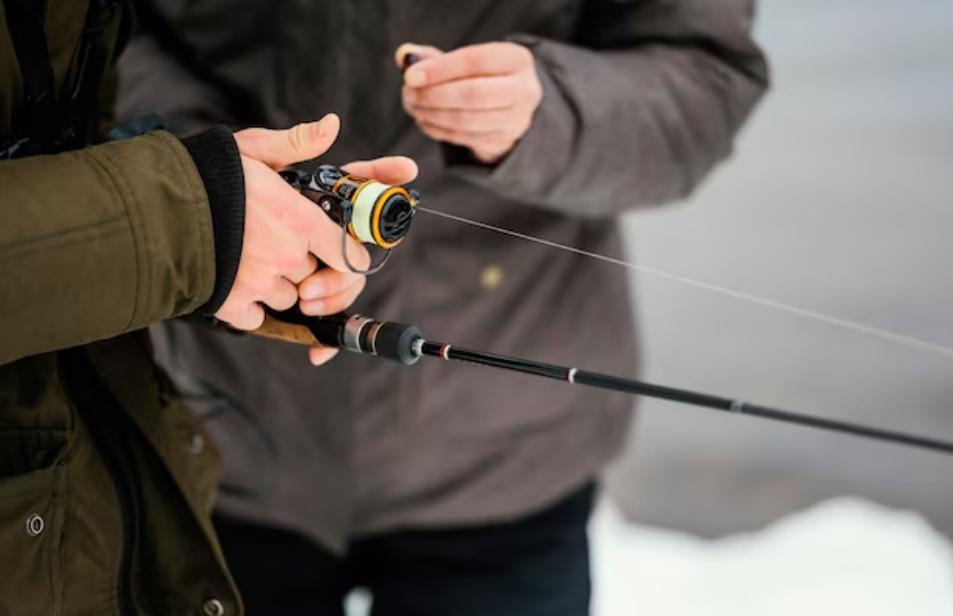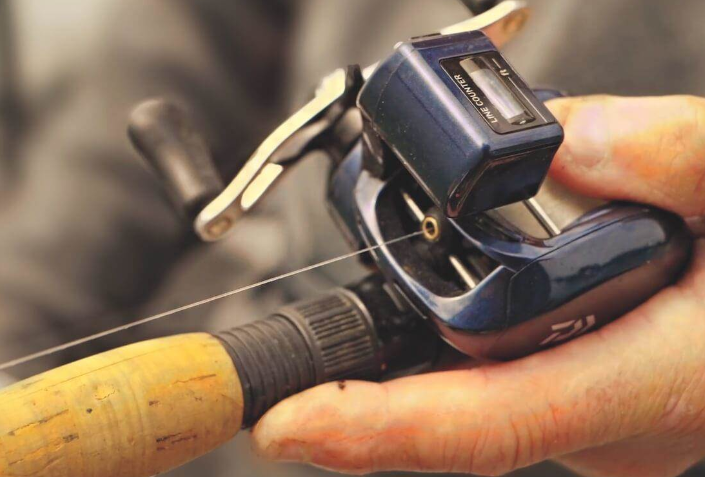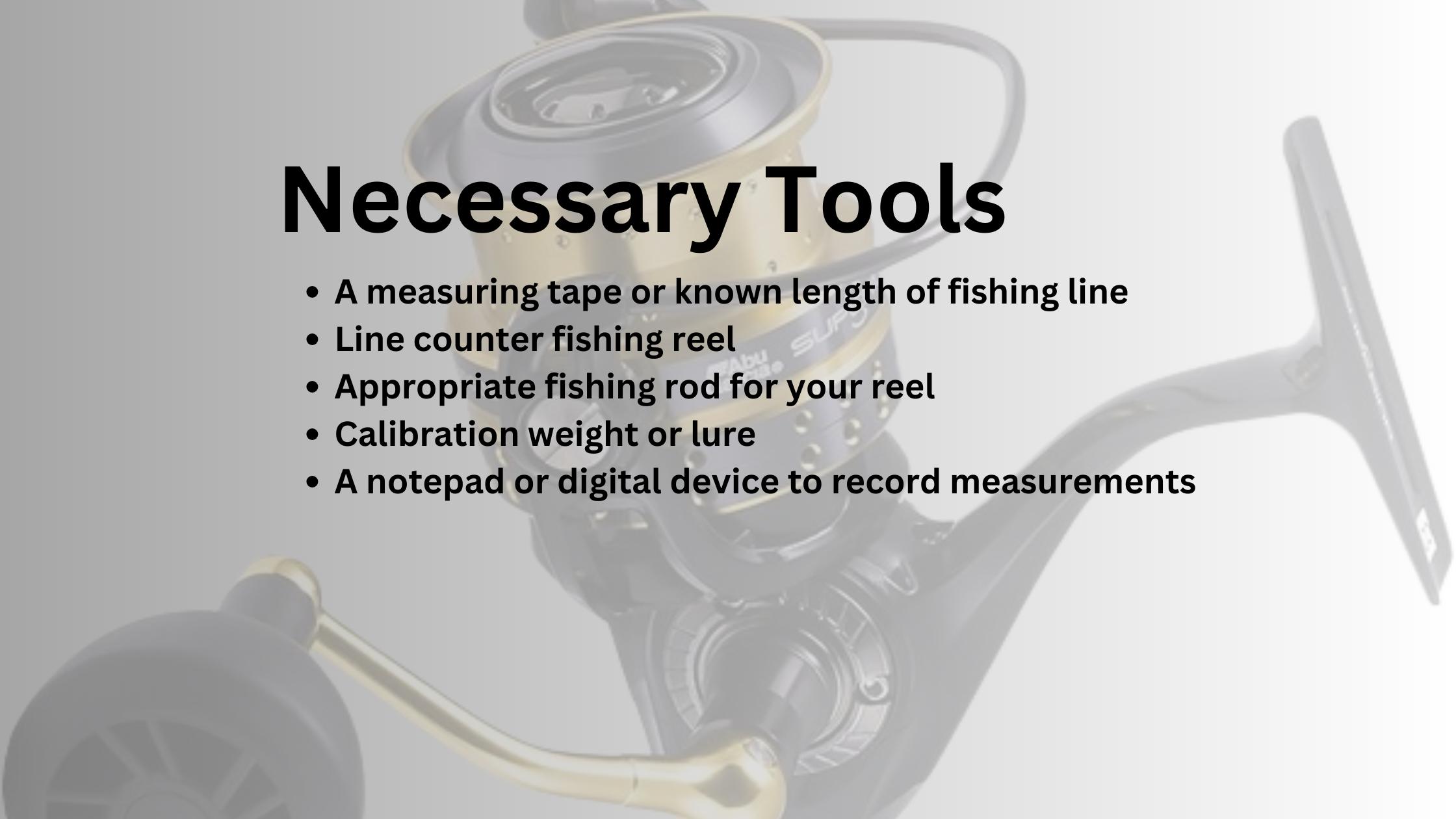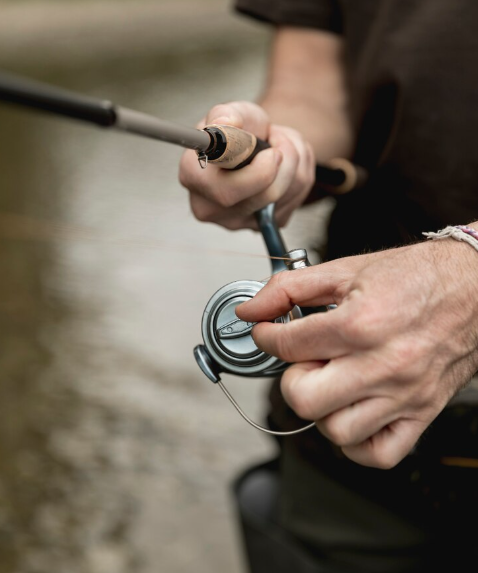To calibrate a line counter fishing reel, reset the counter to zero and test against a measured distance. Ensure accuracy by walking out of the line with a marking process.
Anglers understand the value of precision; calibrating a line counter fishing reel Enriches the accuracy of depth setting, which can make or break a fishing outing. Proper calibration allows for consistency when targeting specific depths where fish are known to congregate.

As fishing techniques become more sophisticated, enthusiasts seek every advantage, including the meticulous use of well-tuned equipment. The calibration process is straightforward and essential to optimize the performance of your line counter reel. Mastering this simple yet crucial task will not only improve your catch rate but also instill confidence that you’re fishing at the intended depths every time. Follow these calibration steps to ensure you’re reeling in success with every cast. Let’s check How to Calibrate a Line Counter Fishing Reel.
Choosing The Right Setup

Setting off on a successful fishing trip hinges on precision and equipment mastery. The first step—a crucial one—is choosing the right setup for your line counter fishing reel, a tool prized by trolling anglers for its accuracy and in-depth setting. Having a well-calibrated reel can make all the difference in tracking your line’s length, which is especially important when aiming for specific depths where fish are known to congregate. Let’s unravel the facets of calibration to optimize your fishing campaign.
Understanding Line Counter Reel Functionality
A line counter reel incorporates a helpful mechanism that informs anglers of the length of the line released from the reel. This feature is pivotal for consistent lure placement, especially when trolling. Calibrating your reel ensures that the digital or analog counter reflects a true measure. As precision is paramount, understanding the functionality of your specific model sets the stage for accurate calibration and, ultimately, fishing success.
How To Calibrate A Line Counter Fishing Reel

- Reset the Counter: Begin with the line counter reading at zero.
- Measure a Baseline Distance: Mark a known distance, typically in increments of 100 feet, using a measuring tape or pre-measured area.
- Release the Line: With the reel attached to your rod, release the line until it reaches the baseline distance.
- Adjust the Reel: Compare the reel’s counter reading with the actual measured distance. Adjust the reel according to manufacturer instructions until the counter accurately reflects the distance of the released line.
- Test and Tweak: Repeat the process to ensure the calibration is consistent at several distances.
Selecting The Appropriate Fishing Line
Calibrating your line counter reel is not just about following steps; it’s also about starting with the right line. The line plays a pivotal role in calibration accuracy. Here are factors to consider:
- Diameter: Thinner lines release more length per spool turn, potentially causing discrepancies. Choose a line with a consistent diameter.
- Stretch: A line with minimal stretch is preferable, as it provides more consistent calibrations.
- Material: Options include monofilament, braided, or fluorocarbon lines. Each type has different characteristics that can affect the calibration.
- Test and Re-Calibrate: Remember, changing line types or even wear over time requires recalibration to maintain accuracy.
Preparing For Calibration
Calibrating a line counter fishing reel is an essential step to ensure accuracy when casting lines at specific depths. A properly calibrated reel can mean the difference between a successful catch and a day spent wondering what went wrong. Before you begin the calibration process, it’s imperative to prepare adequately to achieve the desired results. Here’s how you can set the stage effectively.
Gathering Necessary Tools

The first vital step in preparing for calibration is to assemble all the necessary equipment. You’ll need:
- A measuring tape or known length of fishing line
- Line counter fishing reel
- Appropriate fishing rod for your reel
- Calibration weight or lure
- A notepad or digital device to record measurements
Having these tools at hand will streamline the process and help ensure precision throughout the calibration.
Utilizing Manufacturer Instructions
While general calibration steps can apply to most line counter reels, nothing beats the specifics provided by the manufacturer. Each reel may have its particularities, so it’s crucial to consult the user manual that came with your device. Follow the guidelines closely to avoid any mishaps that could lead to inaccurate readings or potential damage to your reel.
Setting Up The Reel For Calibration
With the instructions and tools ready, it’s time to set up the reel. Mount the reel onto your fishing rod and thread the line through the guides, attaching the calibration weight or lure at the end. Make certain the line is untangled and lies flat, as kinks or coils could affect the calibration. Position yourself in an area with enough space to extend the line, such as a long hallway or outdoors. Reset the line counter to zero before starting the calibration exercise.
Calibration Process
For any angler wanting to elevate their fishing experience, calibrating a line counter reel is essential. This process ensures accurate casting and better control over line deployment, directly influencing your chances of a successful catch. Paying attention to the calibration process not only refines your reel’s performance but also Enriches your overall fishing technique.
Adjusting Tension And Drag Settings
First and foremost, it is crucial to adjust the tension and drag settings of your fishing reel. Proper tension is necessary to avoid spool overrun, while appropriate drag ensures your line dispenses smoothly without breaking under strain. Calibration starts with these fundamental adjustments for a well-functioning line counter reel.
- Set the drag to a medium level where it offers resistance yet allows for a steady line release.
- Ensure the tension knob aligns with the line type and weight you will be fishing with.
- Perform a test cast to check that the line rolls out and retracts without hitches, indicating an optimal tension setting.
Testing The Line Counter Accuracy
To guarantee your line counter reel provides precise measurements, test its accuracy. An incorrect line counter can lead to misguided casting distances and hinder your targeting precision.
- Attach a marked tape measure to your fishing line at the very end of the pole.
- Reel out the line and observe the measurements on the counter in comparison to those on the tape.
- If discrepancies arise, refer to the manufacturer’s guide to reset or adjust the counter.
Fine-tuning For Optimal Performance
Once you’ve set the tension and verified the line counter’s accuracy, additional fine-tuning may be necessary for optimal performance. This step transforms a good reel into a great one, capable of dealing with the several conditions you’ll face on the water.
- Check the line’s responsiveness to different cast strengths; it should adapt fluidly.
- Experiment with several lure weights to see how the reel’s calibration holds up.
- If necessary, make incremental adjustments to the drag and tension settings.
Regular calibration assures a consistently high level of accuracy and a greatly improved fishing experience.
Troubleshooting And Maintenance
When you’re out on the water, the last thing you want is equipment failure. Calibrating your line counter fishing reel is essential to ensure accuracy and efficiency during your fishing expeditions. Even the most reliable gear can encounter issues, and robust troubleshooting and regular maintenance are key to keeping your reel in top condition. Let’s Plunge into how to identify common calibration issues and maintain your reel to avoid unwanted surprises.
Identifying Common Calibration Issues
Recognizing signs of calibration problems early can save you from a potential mishap. Here are the most frequent symptoms you might experience:
- Inconsistent line measurement: If the reel is not displaying the correct amount of line let out, it could indicate a calibration error.
- Drastic line count jumps: Sudden jumps in line count could be a sign of a mechanical problem.
- Line slippage: If the line slips, it won’t measure accurately, indicating it’s time for a recalibration.
Once you’ve identified the issue, you can perform a recalibration by following your reel’s specific manufacturer instructions, often involving a reset and re-measuring of a known length of line under the same tension conditions as your typical use.
Tips For Regular Reel Maintenance
Preventive maintenance is the best approach to extend the life and performance of your line counter reel. Here are essential steps to include in your routine:
| Maintenance Task | Description | Frequency |
|---|---|---|
| Cleaning | Remove dirt, salt, and debris from the reel’s surface. | After each use |
| Lubrication | Apply oil or grease to moving parts according to the manufacturer’s recommendations. | Every 2-3 trips |
| Inspection | Check for wear and tear, especially on the line guide and counter mechanism. | Every trip |
| Test Calibration | Regularly check calibration accuracy using a known line length. | Seasonally |
Keeping these maintenance tips in mind not only ensures your reel performs impeccably but also helps in diagnosing any potential problems before they escalate. Always refer to your reel’s manual for specific maintenance guidelines, and don’t hesitate to seek professional servicing if you encounter persistent issues.
Frequently Asked Questions On How To Calibrate A Line Counter Fishing Reel
What Is Reel Calibration?
Reel calibration ensures accurate line measurements while fishing. This process adjusts the line counter reel to display the correct amount of line released, enhancing fishing precision.
Why Calibrate Your Line Counter Reel?
Calibration, in this context, refers to fine-tuning your reel’s measurements. The process ensures that when the line counter says you’ve deployed 100 feet, it truly is 100 feet. This accuracy is vital for several fishing techniques and settings.
Tools Needed: Why Calibrate Your Line Counter Reel? To start on this journey, gather essential tools: a quality tape measure, your chosen fishing line, and, of course, your line counter reel. Precision demands the right equipment.
Roll Out the Tape Measure to 100 Feet: Why Calibrate Your Line Counter Reel? Begin by rolling out the tape measure to precisely 100 feet. This benchmark serves as the basis for calibration, allowing you to synchronize your reel’s measurements with real-world distances.
Attaching Fishing Line: Why Calibrate Your Line Counter Reel? Carefully spool your line onto the reel, ensuring proper tension. This step is pivotal; the line diameter directly influences calibration accuracy.
Why Calibrate Your Line Counter Reel? For optimal results, consider calibrating your reel more than once. Repeat the process to confirm consistent measurements.
Confirming Calibration: Why Calibrate Your Line Counter Reel? After calibration, confirm its accuracy by cross-checking with known distances. This step ensures reliability in the field.
When Should You Calibrate Your Reel?
Calibrate your reel whenever you change line types or after significant wear. This maintains the reel’s accuracy for effective depth control during Several fishing conditions.
Can Line Counter Reels Measure In Feet?
Yes, most line counter reels measure in feet. They provide anglers with a precise reading of the line’s length, allowing for accurate depth placement of lures.
Conclusion
Calibrating your line counter reel ensures accuracy on your next angling adventure. Mastering this skill promotes precise bait placement, enhancing your fishing experience. Hug the steps we’ve outlined to make the most of your time on the water. Tight lines and happy fishing!

